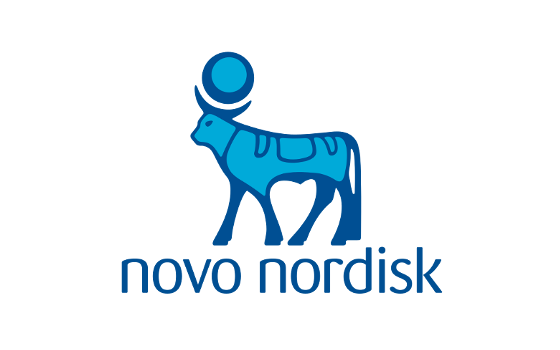 A new analysis of real-world data has shown that switching to Tresiba® (insulin degludec) is highly cost-effective and cost-saving for the treatment of type 1 and type 2 diabetes, respectively.(1) The analysis was presented at the International Society for Pharmacoeconomics and Outcomes Research (ISPOR 2017) 20th Annual European Congress.
A new analysis of real-world data has shown that switching to Tresiba® (insulin degludec) is highly cost-effective and cost-saving for the treatment of type 1 and type 2 diabetes, respectively.(1) The analysis was presented at the International Society for Pharmacoeconomics and Outcomes Research (ISPOR 2017) 20th Annual European Congress.
Tresiba® remained cost-effective even after excluding key benefits associated with switching to Tresiba® such as reductions in hypoglycaemia (low blood sugar levels) and the use of health system resources in a calculation based on a treatment period of one year. When estimating the lifetime cost of diabetes, cost savings were even greater.(1)
These data build on previously reported real-world evidence which found that switching to Tresiba® from other basal insulins, mainly insulin glargine U100 and insulin detemir, provides significant reductions in blood glucose levels, as well as lowering the rates of potentially dangerous severe hypoglycaemic episodes by 92% in people with type 2 diabetes and by 85% in people with type 1 diabetes.(2,3)
"In addition to the body of evidence supporting its benefits in clinical practice, Tresiba® has been shown to be a cost-effective treatment option across various European healthcare systems," said Mads Krogsgaard Thomsen, executive vice president and chief science officer at Novo Nordisk. "We hope these encouraging findings from real-world clinical practice will help make Tresiba® available to even more people living with type 1 and type 2 diabetes around the world."
About the analysis
This new analysis was based on an Italian subpopulation of the EU-TREAT (EUropean TREsiba AudiT) study, which is a European, multicentre, real-world evidence study with 2,550 people, investigating the effect of switching to Tresiba® from another basal insulin in people with type 1 and type 2 diabetes.(1-3)Cost-effectiveness was evaluated based on change in hypoglycaemia rates, basal and prandial insulin dose, and body weight at 6 months after switching to Tresiba® in 397 people with type 1 and 153 people with type 2 diabetes from Italy. Cost-effectiveness models evaluated the incremental cost-effectiveness ratio (ICER) for cost per quality-adjusted life year (QALY)1 and enable comparisons to be made across treatments and therapy areas.
About Tresiba®
Tresiba® (insulin degludec) is a once-daily basal insulin that provides a duration of action beyond 42 hours with a flat and stable glucose-lowering effect.(4,5) It provides low variability in blood glucose levels and a lower risk of overall, nocturnal and severe hypoglycaemia vs. insulin glargine U100.(4,6) On occasions when administration at the same time of day is not possible, Tresiba® allows for flexibility in day-to-day dosing time with a minimum of eight hours between injections.(4) Tresiba® received its first regulatory approval in September 2012 and has since been approved in more than 80 countries globally. It is now commercially available in more than 50 countries.
About Novo Nordisk
Novo Nordisk is a global healthcare company with more than 90 years of innovation and leadership in diabetes care. This heritage has given us experience and capabilities that also enable us to help people defeat obesity, haemophilia, growth disorders and other serious chronic conditions. Headquartered in Denmark, Novo Nordisk employs approximately 41,700 people in 77 countries, and markets its products in more than 165 countries. Novo Nordisk’s B shares are listed on Nasdaq Copenhagen (Novo-B). Its ADRs are listed on the New York Stock Exchange (NVO).
1. Haldrup S, Lapolla A, Gundgaard J, et al. Cost-effectiveness of switching to insulin degludec (ideg) in real-world clinical practice in italy. Poster presentation. International Society for Pharmacoeconomics and Outcomes Research (ISPOR) 20th Annual European Congress, Glasgow, Scotland. November 2017.
2. Siegmund T, Tentolouris N, Knudsen TS, et al. EU-TREAT 1: Switching to insulin degludec reduces the risk of hypoglycaemia in patients with T1DM in a real-world setting. Poster presentation. 77th Annual Scientific Sessions of the American Diabetes Asosciation (ADA), San Diego, California, US. June 2017.
3. Schultes B, Tentolouris N, Knudsen TS, et al. EU-TREAT 2: Switching to insulin degludec improves glycaemic control in patients with T2DM in a real-world setting. Poster presentation. 77th Annual Scientific Sessions of the American Diabetes Asosciation (ADA), San Diego, California, US. June 2017.
4. EMA. Tresiba® Summary of Product Characteristics. Available at: http://www.ema.europa.eu/docs/en_GB/document_library/EPAR_-_Product_Information/human/002498/WC500138940.pdf. Last accessed: October 2017.
5. Haahr H, Heise T. A review of the pharmacological properties of insulin degludec and their clinical relevance. Clin Pharmacokinet. 2014; 53:787-800.
6. Marso SP, McGuire DK, Zinman B, et al. Efficacy and safety of degludec versus glargine in type 2 diabetes. N Engl J Med. 2017; 377:723-732.